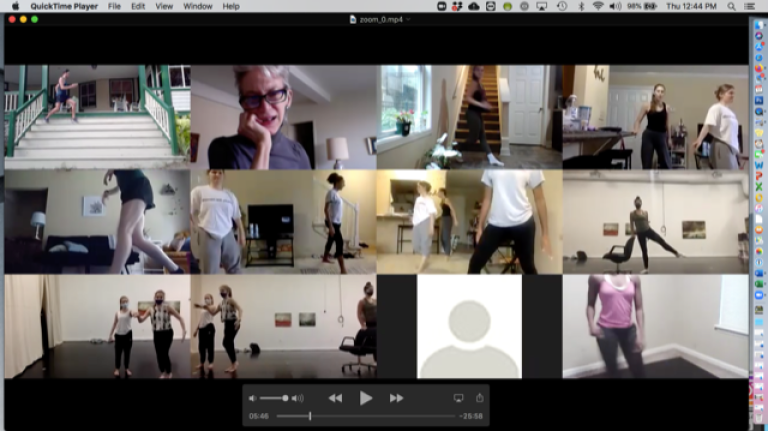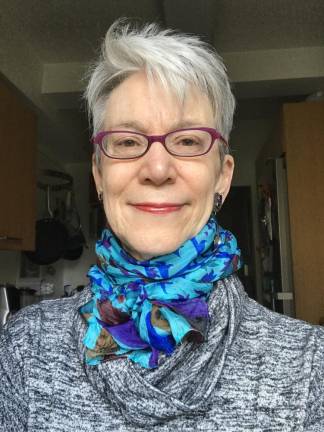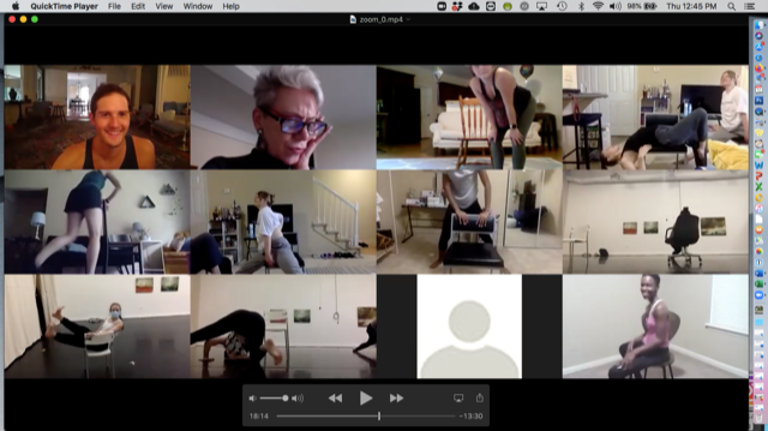A Day in the Life of a NY Choreographer
How Ellen Cornfield is reshaping her work for virtual performances



I recall interviewing Merce Cunningham when the legendary choreographer was in his very late years. He was mastering the new technique of doing his work via computer. As one who still can’t figure out the difference between Snapchat and Instagram, I remain deeply impressed by anyone of 80-plus years learning a new tech invention.
I bring this up because one of Cunningham’s troupe of dancers for almost a decade was Ellen Cornfield who, at this COVID-consumed moment, is meeting all kinds of new challenges herself. Cornfield’s own company — formed in 1989 — was preparing to be in Paris in May, but that didn’t happen, of course. Her latest commission is for an October performance at the University of Georgia, in conjunction with the dance program there. While the performance will be outside on campus, the choreography and rehearsals are happening through Zoom and Google docs. Sound sexy? Hardly.
So what is a day in the life of this choreographer now? Three days a week, two hours at a time, Cornfield is at her laptop, working with the nine selected dance students, plus two professionals from her company. (Who also serve as teachers here.) They all start with a warmup, the dancers standing back far enough to be seen.
Then the choreography begins. “I had developed some of the material before,” Cornfield says, “but thinking it would be for my company in a studio. Now I am mixing and matching old and new material. This is unbelievably challenging for everyone.”
Not to mention creating for a space she will never see in person. “I am looking at an outdoor area and trying to figure out how to keep the dancers six feet apart,” she says, “Fortunately, I noticed a set of stairs near the Quad area, and realized that was one way to work around the issue.” Yep, up and down the staircase. (The piece is titled “Stairs, Chairs and Squares.”)
Fitting into a Zoom Box
Joshua Tuason, one of the regular members of Cornfield Dance, is assisting in the project, and acknowledged the difficulties of this new normal. He is in Rhode Island, Cornfield and his co-professional dancer Cori Kresge is in New York (in separate spaces), and the students are in Georgia.
“The challenge is the limited ability to read each others’ body language,” says Tuason. “And it’s hard to create dance phrases when your full body doesn’t always fit into a Zoom box. But I’m amazed by our ability to connect and exchange ideas.”
The dancers will be masked and wearing black gloves. The performance runs about fifteen minutes and will be done twice in a row. It will also be recorded and, Cornfield says, perhaps used as a template for other locations, “depending on how long this all lasts.”
Does she fear that dance lovers might get comfortably used to watching from home? “For now, it’s a good substitute,” she says, “and better than doing nothing. And some of our work can be enjoyed around the globe. But I long for the live version and I don’t want to keep creating bodies over Zoom.”
Why does Ellen Cornfield take on daunting logistics, and a feat of technology, at this time? Her husband Arnold Margolin, says, “This is not the first time I have seen her go through a huge expenditure of time, talent and energy. There is no logical explanation except Ellen IS dance. Creating new work for her is breathing. So if there are obstacles like pandemics and injuries and replacing dancers..and knees and hips ... so what? She was a fierce dancer and she remains a fierce lover of movement.”
Cornfield Dance’s mission is “to move, entertain and provoke, mixing kinetic energy that reach the audience’s heart, and quickens the feeling of being alive.” I can’t think of a better time — and more urgent need — for that.